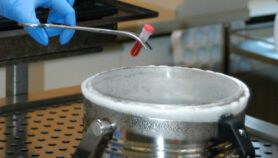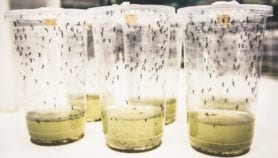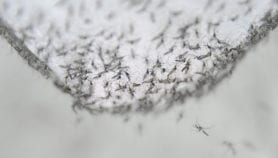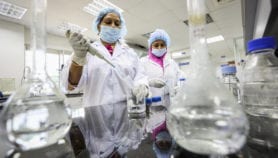By: Mike Shanahan
Send to a friend
The details you provide on this page will not be used to send unsolicited email, and will not be sold to a 3rd party. See privacy policy.
[MARRAKECH] Researchers have shown for the first time that rice bred to contain extra iron can boost people’s nutrition.
They say such rice varieties could one day help fight a form of malnutrition affecting nearly two billion people, mostly women and children in developing countries.
Iron deficiency is the main cause of anaemia, which can stunt children’s mental and physical development, and cause chronic fatigue in adults. More than 60,000 women die during pregnancy and childbirth each year because of it.
Until now, the only ways of boosting dietary iron have been with costly supplements, in the form of pills and tonics, or by eating a balanced diet that includes iron-rich foods. For many people living in poverty in the developing world, however, these options are not available.
When crop scientists proposed breeding new varieties of staple crops with increased iron content as an alternative, nutritionists cast doubt about whether people eating such crops would be able to absorb the iron.
"There were a lot of sceptics," says Howarth Bouis, director of the Consultative Group on International Agricultural Research’s (CGIAR) HarvestPlus programme, which oversaw the research. "It turns out their scepticism was unfounded."
Jere Haas of Cornell University in the United States and colleagues gave nuns in the Philippines an iron-rich variety of rice to integrate into their diet. The study showed that after nine months, the nuns had significantly more iron in their blood than those who ate their usual local variety.
The findings, published in the latest issue of the Journal of Nutrition, were presented yesterday (5 December) at the annual CGIAR meeting in Marrakech, Morocco.
The new rice variety, which was developed using conventional breeding techniques at the Philippines-based International Rice Research Institute (IRRI), provided 17 per cent more dietary iron than the local variety tested. It was tested by researchers at IRRI, Cornell University, Pennsylvania State University and University of the Philippines Los Baňos.
Although the study is the first to show that the approach can be used to tackle iron deficiency, more research will be needed to further boost the rice’s iron content before it can be sold on the market.
Bouis says that in addition to conventional breeding, genetic modification "may be something we pursue [to further increase iron-content] in the future".
The HarvestPlus programme aims to tackle the ‘hidden hunger’ of micronutrient deficiency by increasing levels of zinc, iron and beta-carotene — which our bodies convert to vitamin A — in staples such as rice, wheat, beans, maize, cassava and sweet potatoes.
Link to full paper in Journal of Nutrition
Reference: Journal of Nutrition 135, 2823 (2005)













